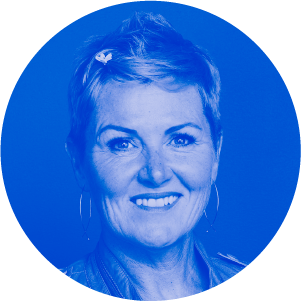In their own words: How open is too open?
A strong culture of transparency doesn’t mean there aren’t limits. So how can you find those boundaries before you trip over them? Sometimes, you can’t.
This article is the second in a series exploring what a culture of openness really looks like, warts and all, in the words of every-day Atlassians who are living it.
The level of openness inside Atlassian is shocking at first. But also a breath of fresh air. Transparency and trust feed off each other in a virtuous cycle.
Unless you handle sensitive information on a daily basis, however, it’s easy to miss the nuances around transparency inside an organization. Sharing information openly can be counter-productive if people on the receiving end don’t understand the context surrounding it. Between that and the obvious limiting factors like government regulations and personal privacy protections, it’s no wonder most companies choose to stay locked down. One misstep can set off an explosion.
Atlassian chose to brave this minefield long ago and navigates it rather well. Material non-public information is routinely shared with staff before being made public, with no leaks to date. Backlogs and project plans are available to anyone who seeks them out. It’s not uncommon to find that someone has written an open letter to the entire company sharing their experience with mental illness, losing a child, surviving domestic abuse, or understanding their transgender identity.
Still, there’s a palpable tension created when security, compliance, and good business sense pull against the desire to be transparent whenever it’s practical (and sometimes when it’s not). I brought five Atlassians whose roles put them smack in the middle of this tension together for a conversation about the collective journey we’re on as we scale the company, reach milestones, make mistakes, and get back up again. For starters, the recurring debate over whether to expose salary information internally…
 Helen Russell joined Atlassian in 2016 as Chief People Officer. The way she lives our values, and her wicked sense of humor, make her an important culture champion.
Helen Russell joined Atlassian in 2016 as Chief People Officer. The way she lives our values, and her wicked sense of humor, make her an important culture champion.
Helen: I intend to open that data up in as much as you’ll be able to see the salary range for your role and the ranges for the job family you’re in so you can see how to build your career path. There’s a lot of foundational work to do first. We’ve only just acquired external benchmark data and we’re embedding it into all of our job levels. It’ll probably take another year to validate and smooth things out, and until then, opening up salary information would be more distracting than helpful.
When you release something, you want to have as much trust and integrity and confidence as you can – you want to know the concrete is dry. Our concrete is still pretty wet in this case. But we’ve made trade-offs in the past where we erred on the side of open. The most poignant example is when we shut down Stride, which meant deciding how to tell the employees whose jobs were affected before we announced it publicly.
 Tom Kennedy has been Atlassian’s top attorney since 2011. His legal smarts and empathetic manner quickly earned him a reputation as a trusted voice of reason.
Tom Kennedy has been Atlassian’s top attorney since 2011. His legal smarts and empathetic manner quickly earned him a reputation as a trusted voice of reason.
Tom: We had a firm deadline because this was happening at the same time we announced our partnership with Slack and released our annual earnings guide. If the news that we were exiting the communications space slipped out early before we had a chance to share it in the context of these other announcements, then the market overreacts and suddenly we’re down 15%, which is bad because it wouldn’t have been based on complete information.
 Ian Lee came to Atlassian in 2015 as Head of Investor Relations. So you can imagine how he was feeling about this whole announcement situation…
Ian Lee came to Atlassian in 2015 as Head of Investor Relations. So you can imagine how he was feeling about this whole announcement situation…
Ian: I was sweating bullets every single day.
Tom: Ian’s reflex reaction is that we cannot risk this information about our exiting the communications space leak out without the full context we would provide on our earnings call. That makes perfect sense, and there would have been a good rationale for not informing staff ahead of time.
Helen: Everyone is coming at this through the lens of their role and the risks they need to mitigate. Ian had to think about investors. Tom had to think about our partners. I had to think about doing right by our employees, but also whether they’d be able to keep that information secret, even from their families.
Tom: We ultimately decided that having Atlassians find out at the time we announce it publicly would be damaging to the entire staff. I’ve been here a long time, so I brought a bias of having to announce it internally first because we can’t violate that trust.
Ian: We already had a history of giving trust and asking for it in return. And having been at companies where there is no trust, I know this doesn’t just happen overnight. So while I was incredibly uncomfortable in the four days between the internal announcement and the public announcement, I knew it was the right thing to do and held my tongue. I knew the company would handle it the right way. But that was the single hardest thing I’ve had to do here.
Tom: This was not a slam-dunk, one-conversation decision. We debated this on the executive team over a couple of months. To [Chief Financial Officer] James’ credit, his instinct was not to do it this way, for obvious reasons. But when he looked around the room and saw all the folks who had been here a long time saying, “We need to lean into this. This is the right call,” he was fully on board and trusted in it.
Helen: And not one person – not one out of 4,000 people – leaked anything. That was incredibly humbling, and a career first for me.
 Aubrey Blanche has been leading our global diversity and belonging programs since 2015. The only thing brighter than her electric pink hair is her smile.
Aubrey Blanche has been leading our global diversity and belonging programs since 2015. The only thing brighter than her electric pink hair is her smile.
Aubrey: I wasn’t directly involved in that announcement but was surprised by how open we were internally. We chose to do something no consultant would ever tell you to do. I deal in very sensitive data that has a lot of privacy implications. Trying to be open while still minding security and privacy assumes not just a very high level of good intent, but also a high level of education and awareness of the implications.
When I was first getting to know our internal data systems, I discovered they’d been integrated in such a way that a particular piece of data wasn’t handled properly. We locked it down immediately, and not because we didn’t want to provide transparency, but because we have a duty of care around the privacy of that information. I don’t think whoever did the integration was acting out of malice. They just weren’t aware of the implications.
 Bill Marriot joined Atlassian in 2015 as our Trust & Security Manager. For a guy who gets paid to mitigate risk, he has a surprising appetite for adventure travel.
Bill Marriot joined Atlassian in 2015 as our Trust & Security Manager. For a guy who gets paid to mitigate risk, he has a surprising appetite for adventure travel.
Bill: Similar issues come up in my world. We have a ‘red team’, which acts like external hackers and tried to attack our systems. The woman leading this team ran her first exercise over the course of about six weeks. Her findings were incredibly valuable in terms of improving our systems.
She and our CISO gave a presentation about it at a company town hall and followed it up with an internal blog post detailing the steps she took, where she could’ve gotten stopped, and what the overall impact was. We ended up locking down that post after a while and making it available to just a few people because of the potential commercial impact if that information were to get out. It was essentially a blueprint for hackers. While we were addressing the issues she found, we wanted to make sure the only hackers who have those details were the folks on our red team.
Aubrey: Right. There are gradations of transparency. Turns out we disclose a lot, though. When I first got here and wanted to release some of our diversity data, I was ready for a big debate. I built a slide deck and everything. Then when I presented it, people were like ‘Yeah, that makes sense. Can we look at the report beforehand just as an FYI?’ I almost fell on my face because I was so surprised there was no pushback. And all my colleagues out in the D&I community were like “What’s wrong with your lawyers?”
Tom: When people come to me saying I should be all alarmed, I’m like “Yep, that’s just how it works around here.”
Aubrey: But radical transparency, like anything taken to the extreme, does not work. When Atlassian publicly voiced support for marriage equality in Australia, an employee in our Sydney office wrote an internal post challenging that because it didn’t necessarily represent the views of all employees. Part of me was devastated. On the other hand, that person felt comfortable being open about their view. Their manager did have to pull them aside and talk about the limits of openness, though. It doesn’t mean you’re allowed to openly denigrate your transgender colleagues. But the fact that I didn’t personally have to get involved – that the manager and teammates pushed back and enforced the boundary of what open means – that was really powerful. Bad culture requires policy. Healthy culture is self-reinforcing.
Helen: Going back to the decisions around Stride, Mike [Cannon-Brookes] gathered the Stride team together in our Austin office to tell them about it, and broke down. He couldn’t finish his sentence because he was overcome with emotion. Everyone in the room is sitting there like “Oh my God. This is personally devastating for him.”
Tom: Mike displayed so much honesty that you couldn’t help but say ‘Wow. He’s being completely straight up with us, and this is crushing him. He really cares.’ If he’d stood up there and kind of gave a typical corporate CEO talk, someone would have leaked the news. Someone’s like “F this place. F these people.” But they trusted that our CEOs’ intentions were good and went along with their ask because they could see it was a decision they hadn’t taken lightly. Trust has to run both ways and Mike and Scott [Farquhar] have set that tone.
Aubrey: Another example of self-reinforcement was when we had a gender-fluid employee with male anatomy who wore leggings one day that were really tight. A few women came to HR saying it made them feel uncomfortable. This person was like “Well, women wear yoga pants sometimes, and those are also very tight.” I pointed out that, for sexual assault survivors, myself included, seeing something like that in the workplace can actually be debilitating. And they were like “Ok, you’re trying to advocate for multiple groups here and I totally understand.” When things calmed down, what we ultimately got was a lot of community dialogue about the limits: how we show up and how we affect each other. And it was reassuring to see the folks who felt directly affected play a big role in that. Since then, I’ve seen people feeling frustrated by being asked not to act or talk a certain way, but also acknowledging that they’re impacting other people and thinking about how they can adjust. Because open isn’t unconditional.
Bill: It’s an interesting journey, right? When we first rolled out the repository of company policies on our intranet, anybody could edit them. We started that whole project seeking opinions on how to make things better, and not putting limitations on that. “You wanna make this better? Great. Make it better.”
Over time, we’ve dialed it back a bit in terms of who can modify those pages. It’s been interesting to see us incrementally lock it down a little as we’ve seen the need to.
Helen: It’s a bit like remote work. Companies that start off as in-office environments, then suddenly open the floodgates on remote end up walking it back because they haven’t built the muscle around it. It’s a similar thing with transparency. There are certain behaviors and practices that go hand in hand with it.
Tom: I’d also say that the tone at the top matters. Mike and Scott once asked everyone on the executive team to give them feedback on what they could do better. Then, at an offsite, they sat in front of all of us and talked about the areas they were going to focus on improving and where they could use help from the team. Their guard was down and it was pretty powerful. I walked away from that day with a lot of energy. I think a lot of people did.
Ian: I spent the worst year of my professional life at a company where sharing information between divisions was almost nonexistent. Then new management came in and tried to change the culture. But the problem was that people didn’t trust each other. People were like “Why are you sharing this with me? Do you have some ulterior motive?” Trying to become open is more difficult than starting from a place of being open by default because the trust isn’t there initially.
Tom: Changing the DNA of a company is really, really, really hard. It takes a long time. If you start as a closed company and then try to make the culture more open, you have to have a CEO who is sort of pushing it. They’ll need to fight through every layer of management to get them to think and behave differently.
Helen: It’s like raising kids. The more you say, “This is on you,” or, “It’s your responsibility,” the more they rise to the challenge. It’s more effective than when you start by defining a lot of boundaries for them.
Tom: There’s always a risk our openness and transparency will cause issues for us at some point, but it’s a tradeoff we’re willing to make and has served us well overall. For it to work, everybody needs to value it and share in the responsibility that comes with it. Our value “Open company, no bullshit” is foundational to Atlassian and has been critical in making this the incredible place to work that it is.
Helen: If you treat people like adults, they’ll respond in kind.
Want more Open?
Join us for a special event exploring the future of work at Atlassian Open. We’re touring the world and making a stop in Vienna, Sydney, and Boston. Learn new ways to work Open, team trends, proven practices for better collaboration, and the important role cloud plays.










































